Queen Victoria Market Southern Precinct Towers Conditionally Approved: A Missed Opportunity for Innovative Housing Design
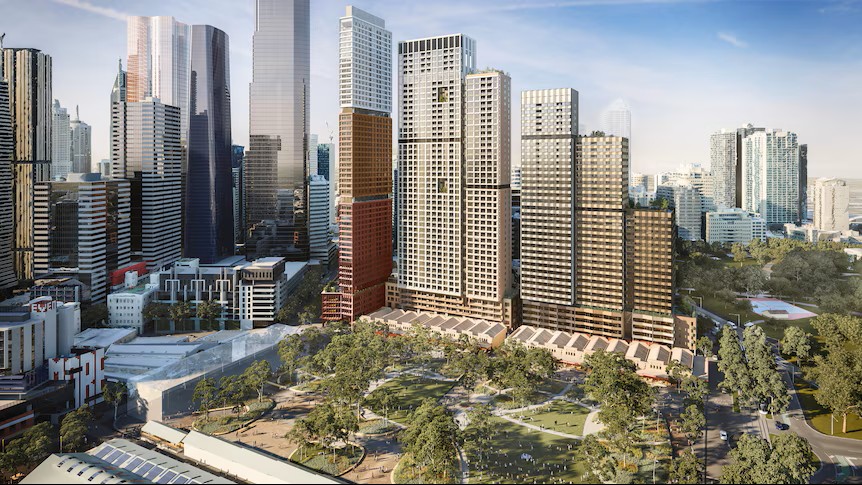
Feature Image: Render of QVM Southern Precinct Towers. Source: City of Melbourne
The Federal Government has conditionally approved the Queen Victoria Market Southern Precinct Development “Controlled Action.” The National Trust has long been calling for a better design of three high-rise towers behind the Franklin Street Stores which will have significant impact on the National Heritage Values of this important Melbourne landmark.
The conditions of approval have thankfully mitigated some of the worst damage the tower designs might have caused, but the resulting construction represents a missed opportunity to demonstrate strong heritage considered housing design for one of Australia’s most significant cultural sites.
The Queen Victoria Market has operated continuously since the 1870s and is recognised as one of the great nineteenth century markets of Victoria. It holds the distinction of being the only Melbourne market to survive from the group of important central markets built by the City of Melbourne Corporation, earning its place on the National Heritage List in 2017.
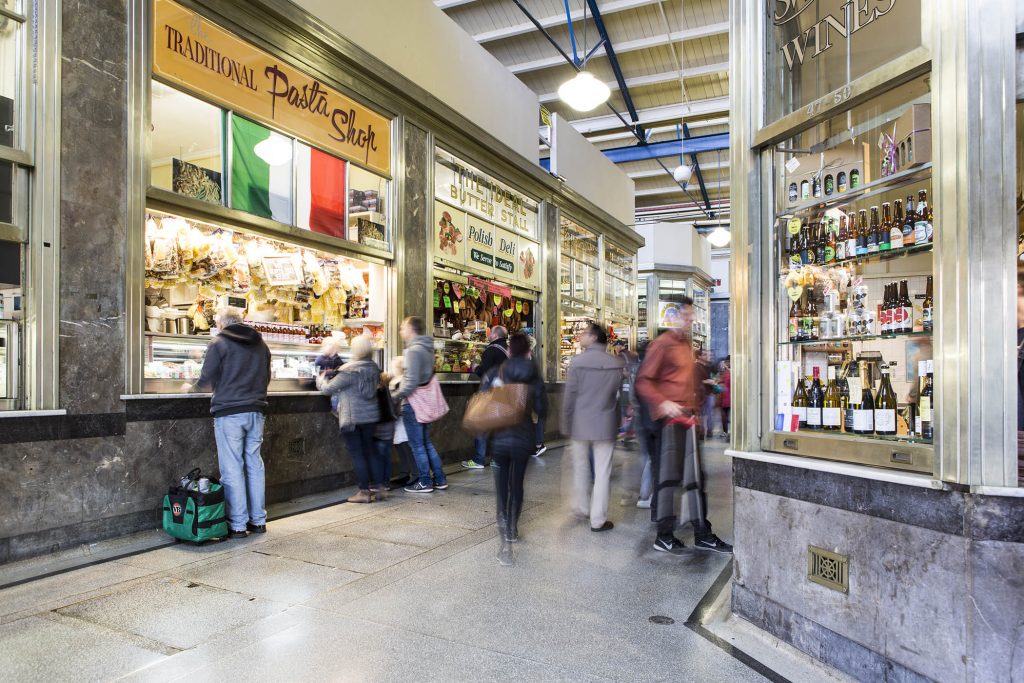
What Has Happened?
After assessment under the Environment Protection and Biodiversity Conservation (EPBC) Act, the Federal Government has approved a development that we believe will impact the Queen Victoria Market’s National Heritage Values in ways that could have been better addressed through alternative design approaches.
The development includes Towers 1, 2 and 3 behind the Franklin Street Stores, plus the Queen’s Corner Building. While we understand the economic imperatives driving this project, and the need for more housing in the state, we believe the current designs present challenges for the heritage values that make this market nationally significant.
Our December 2024 submission to Lendlease’s Draft Public Environment Report outlined detailed concerns about the heritage impacts. We identified how the proposed towers would:
- Alter the market’s distinctive low-scale character through their height and bulk
- Impact significant sight lines and views within the heritage site
- Require modifications to heritage fabric through canopy adjustments
- Change the “open setting” that characterises the market’s heritage values
The conditions of the approved development have mitigated some of the negative impacts, with the Federal Government requiring further set back of the tower overhangs and will re-instatement of the Franklin Street Store canopies, rather than the partial demolition in the original proposal.

Image: QVM Southern Precinct artist render. Source: Lendlease
What Should Have Happened?
It is a shame that the Federal Government has had to step in to mitigate the potential damage to the National Heritage Values of the Queen Victoria Market. The National Trust has repeatedly called for well-designed development that respects heritage values from the outset of the design process.
We continue to support elements of the QVM Precinct Renewal Program, including the creation of Market Square and the adaptive reuse of the Franklin Street Stores, which demonstrate how change of use can enhance heritage sites when carefully planned.
Our concern is not with development itself in proximity to the QVM, but with ensuring that development designs for National Heritage places fully consider and respond to their significant heritage context. We believe there are design solutions that could achieve both development objectives and stronger heritage outcomes – what we call TIMBY (Thoughtfully In My Backyard).
Rather than viewing heritage as a barrier to housing, the National Trust is championing projects that demonstrate how careful integration of heritage considerations can result in high-quality, context-sensitive housing outcomes that benefit both residents and the broader community.
The Queen Victoria Market’s significance extends beyond its buildings. It serves as an affordable and diverse retail market with small, independent businesses from many cultural backgrounds. For generations, it has been an important shopping, leisure and meeting place for Victorians and visitors to Melbourne.
The market’s social significance is closely connected to its physical heritage. The complex of food halls, open sheds, shops, and stores maintains distinctive trading practices that provide continuity from the nineteenth century to today. Changes to the physical setting inevitably influence these social and cultural values.
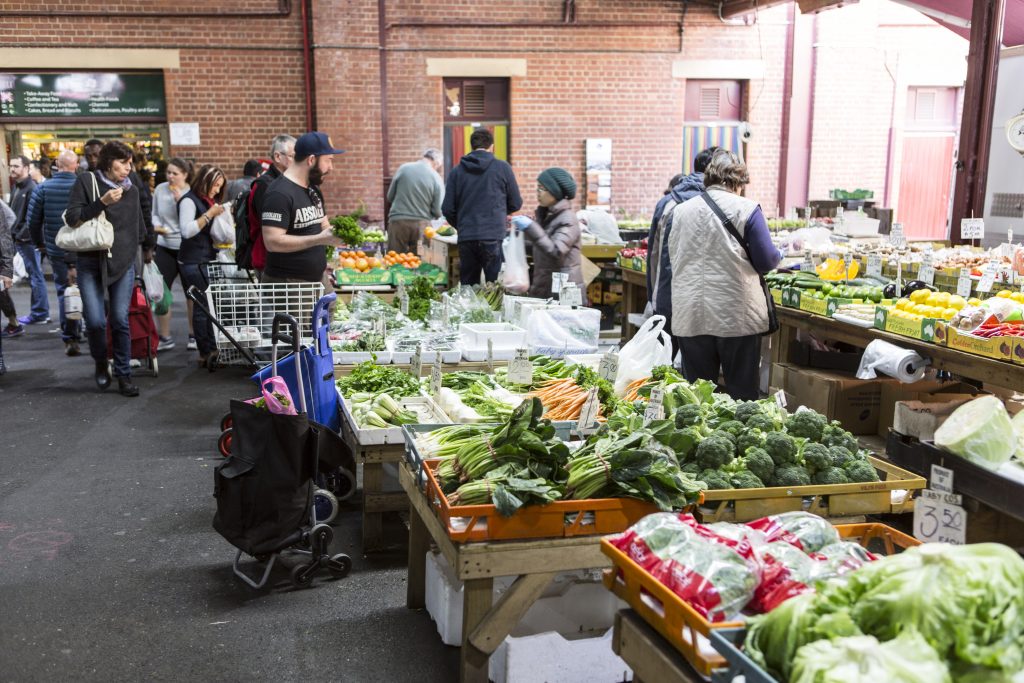
Why Did it Happen?
This decision raises broader questions about heritage protection processes. Federal heritage legislation can consider impacts that state processes cannot address, including effects of adjacent development on heritage settings and important views. The approach taken in this assessment will influence how similar situations are handled in future.
Due to the nature of the QVM Renewal Program deal between the City of Melbourne and the Victorian Government, the proposed tower designs have been repeatedly presented as a fait accompli throughout the planning process, despite the negative heritage impacts. However, agreements between state and local government regarding the Renewal program, should hold no sway over the Commonwealth Government’s decision on whether these towers are a significant impact to the National Heritage values of the site.
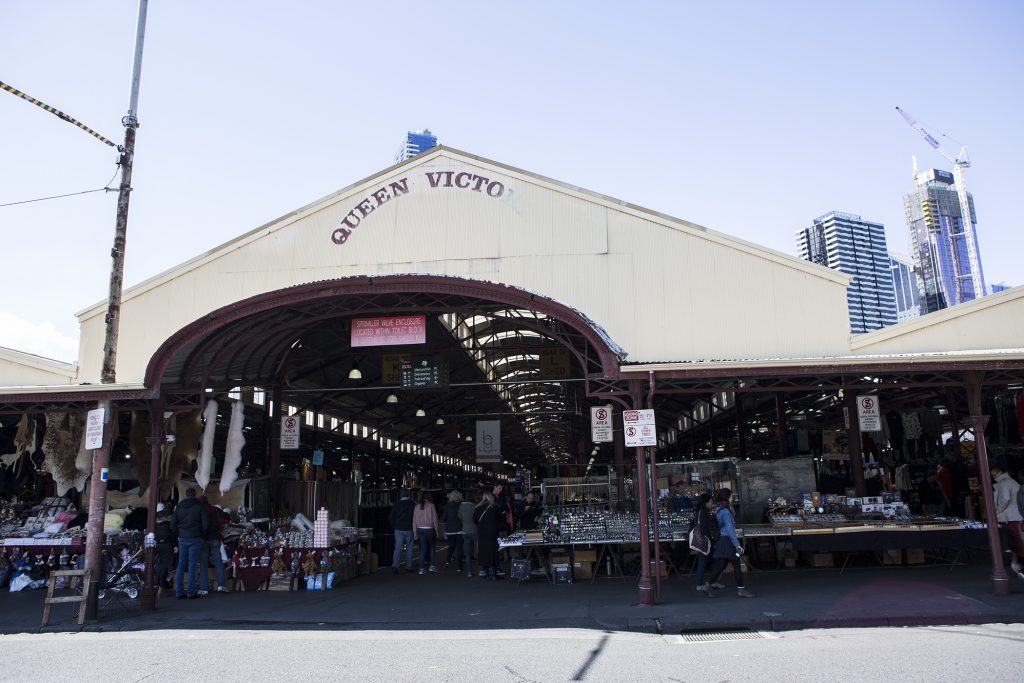
What Now?
We believe there were opportunities in this process to explore design alternatives that could better balance development needs with heritage protection objectives.
While disappointed by this outcome, we remain committed to working constructively with all parties to achieve the best possible heritage outcomes as the project proceeds. This case highlights the importance of early engagement in development processes and the value of design approaches that see heritage as an asset to be enhanced rather than a constraint to be managed.
The Queen Victoria Market, with its 150 years of continuous operation, represents an important part of Melbourne’s story. We believe it deserves development approaches that celebrate and strengthen its heritage values while meeting contemporary needs.
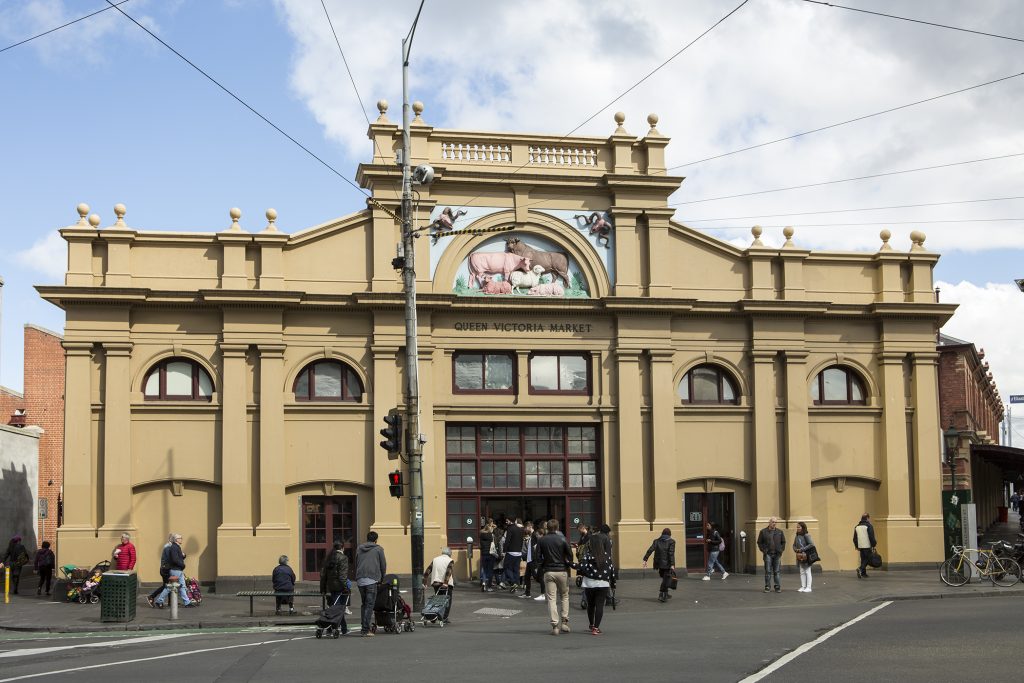
Please keep the integrity of QVM it has been a major part of many Victorian’s Identity. An iconic institution that has been part of the people of Melbourne’s life and when in discussion about who we are, seldom does it not get a mention. I have lived interstate and abroad and there is not one time that when thinking or talking about Melbourne has the grand old lady not been a part. I am back and I have not only returned to Melbourne I have returned to her. I do not want and I suspect others do not want QVM to become insignificant because developers want her to become part of the shadows. No I say ‘ Don’t put baby in the corner’
The federal government’s decision to approve the Gurrowa Place towers is a declaration that heritage protections in this country are little more than decoration.
Queen Victoria Market is not just a trading floor — it is one of the last intact examples of Melbourne’s 19th-century civic planning, protected under heritage law precisely because its open space, skyline, and market character are integral to its significance. This approval shreds that principle.
The Build-to-Rent towers will wall off the Market, obliterate its historic sightlines, and replace a public commons with a private investment product. The so-called “heritage offsets” are a smokescreen, offering token gestures while the very values the listing was meant to safeguard are erased.
Our laws were designed to stop this. Instead, they have been circumvented — or worse, willingly bent — by those entrusted with their enforcement. Ministers, council officers, and developers now share responsibility for an act that will be remembered not as renewal, but as sanctioned vandalism.
Once the towers rise, there will be no undoing this mistake. It will stand as proof that in Melbourne, heritage protection ends the moment it conflicts with a development yield.
NO NO NO NOT AGAIN!!!! yet another example of wonton vandalism and destruction. I live in central Victoria and I can tell you part of the reason so many Melbournians come here is because of the heritage and built history that is still in tact! I just don’t get why money always has to dominate in this way! What can be done???
Out of all the available sites imaginable in the city district why this one? Personally I have been coming to the Queen Victoria Market my whole 70 years of life starting with my parents way before my arrival dating over 100 yrs . This site is an institution bringing the melting pot of Australians together schooling many in languages and respect of differences. As well as the economic value in both sides of the trading . If it aint broke don’t fixit there is a huge difference between economics and greed . Sadly Greed is the evil engine powering this development. Lets think of the future market goers and traders over future development . Not withstanding the southern end is the original site of the The OLD MELBOURNE CEMETEARY another reason not to disturb this Historical site. Shame , Shame , Shame.